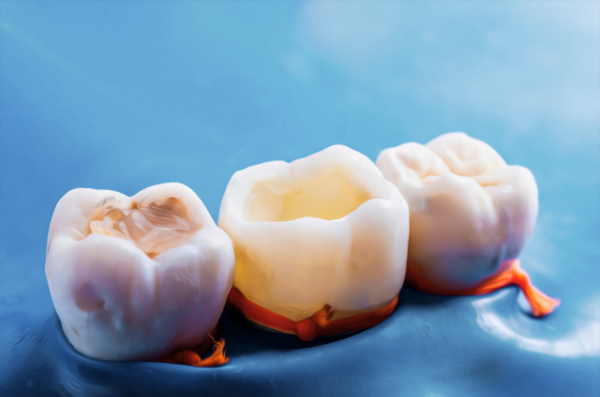NEUTRAL BAY | RESTORATIVE DENTISTRY
Dental Fillings
Dental fillings are one of the most common restorative procedures, used to repair teeth affected by minor decay or small fractures. Left untreated, small cavities can grow into deeper issues requiring more extensive work like root canals or crowns.
What are dental fillings?
Dental fillings are materials used to restore teeth that have been damaged by decay, wear (eg. toothbrush, acid, grinding or clenching), or minor fractures. At Oaks Dental, we use tooth-coloured composite resin or ceramic for an aesthetic and durable result, blending in seamlessly with your natural enamel.

What happens during a dental filling appointment?
1. Examination & X-rays
We’ll start with a thorough examination, including X-rays if needed, to assess the extent of decay or damage and overall health of the tooth.
2. Local Anaesthetic
If needed, strong numbing gel, followed by local anesthesia to ensure a pain-free procedure.
3. Preparation
The affected area is cleaned, and any decayed or damaged tooth material is removed.
4. Filling Application
We use high-quality composite resin that matches the natural colour of your teeth. The material is carefully placed and shaped to restore the tooth’s structure. We use a rubber barrier that keeps your teeth dry and clean, enhancing the adhesion and success of the materials.
5. Final Adjustment
Once the filling is placed, we’ll ensure it fits comfortably and blends naturally with the rest of your smile.
Cavities Explained: Causes, Symptoms & Why You Would Need a Dental Filling
What causes tooth decay?
-
Cavities caused by plaque, sugar, and bacteria breaking down enamel
- Poor oral hygiene – irregular brushing, flossing, or missed dental visits
-
Acidic diet – frequent consumption of soft drinks, citrus, or wine
-
Cracks and wear – from clenching and grinding (bruxism), weakening teeth and making them more prone to decay
-
Old or damaged fillings – may break down and need replacement
-
Gaps between teeth or deep grooves – harder to clean, more prone to decay
How do I know if I need a Dental Filling?
You may need a dental filling if you notice any of these signs:
- Visible cavity – such as a dark spot, hole, or chip in your tooth
- Tooth pain or discomfort when chewing or biting
- Sensitivity to hot, cold, or sweet foods and drinks
- Rough or worn surfaces caused by teeth grinding or enamel erosion
A dental exam and X-ray is the most reliable way to confirm whether a filling is needed.
What happens if I don’t get a Dental Filling?
If a cavity is left untreated, it will continue to grow and damage the tooth. Without a filling, you may experience:
- Increased tooth pain and sensitivity
- Spread of decay into deeper layers of the tooth
- Infection or abscess that can cause swelling and severe discomfort
- Weakened tooth structure, leading to cracks, chips, or even tooth loss
- The need for more complex treatments later, such as a crown, root canal, or extraction
Getting a filling early helps stop decay, restore tooth strength, and protect your long-term oral health.

Frequently Asked Questions About Dental Fillings
How long do dental fillings last?
With proper care, tooth-coloured composite fillings typically last 7–10 years, while ceramic fillings can last 10–15 years or more. At Oaks Dental we take pride in providing you with high-quality and long-lasting fillings.
Why do I need a new filling?
Fillings are strong and durable but not indestructible. Fillings can still develop decay underneath them or wear overtime. Good oral hygiene and attending regular dental check-ups will help ensure they last as long as possible.
Is getting a dental filling painful?
No – at Oaks Dental we aim to make the treatment comfortable and pain-free. If needed, we use strong numbing gel and local anaesthetic to ensure you’re comfortable during treatment. Some fillings can be placed even without local anaesthetic. Most patients feel little to no discomfort afterward.
How long does a filling appointment take?
A filling appointment generally takes 60 minutes, depending on how many teeth are being treated and the size of the cavity.
What can I eat after a dental filling?
Dental fillings are fully set once placed, so you can safely eat once the numbness wears off if you’ve had local anaesthesia (within 1–2 hours for upper teeth and 3-5 hours for lower teeth). For deeper fillings, we recommend that you avoid very hot, cold, or hard foods for the first 24 hours to minimise irritation to the nerve of the tooth.
Are fillings covered by private health insurance?
Yes — if you have dental extras cover, fillings are often partially or fully covered. We can check your rebate on the spot and let you know your out-of-pocket cost.
What’s the difference between composite and ceramic fillings?
Composite fillings are made from tooth-coloured resin, best for small to medium repairs. They are aesthetic and affordable. Ceramic fillings (also known as inlays or onlays) are made from porcelain, highly durable and stain-resistant ideal for larger restorations and back teeth.
Should I replace my old metal (amalgam) fillings?
We can safely remove and replace old silver (amalgam) fillings with modern, tooth-coloured composite or ceramic materials for improved aesthetics and function.
Why choose Oaks Dental for your Dental Fillings

Patient comfort is our priority
We use our strong numbing cream & local anaesthesia, and do dental fillings under rubber dam, allowing you to relax comfortably during your pain-free and stress-free treatment. You can even watch TV or listen to music!
Natural-looking fillings
We offer tooth-coloured composite fillings that blend perfectly with your natural teeth for a subtle, aesthetic result. We also offer ceramic fillings made from porcelain which are stronger and stain-resistant.
Long-lasting durability
We use superior materials and tools that ensure your dental fillings are strong, long-lasting, and resistant to wear.













